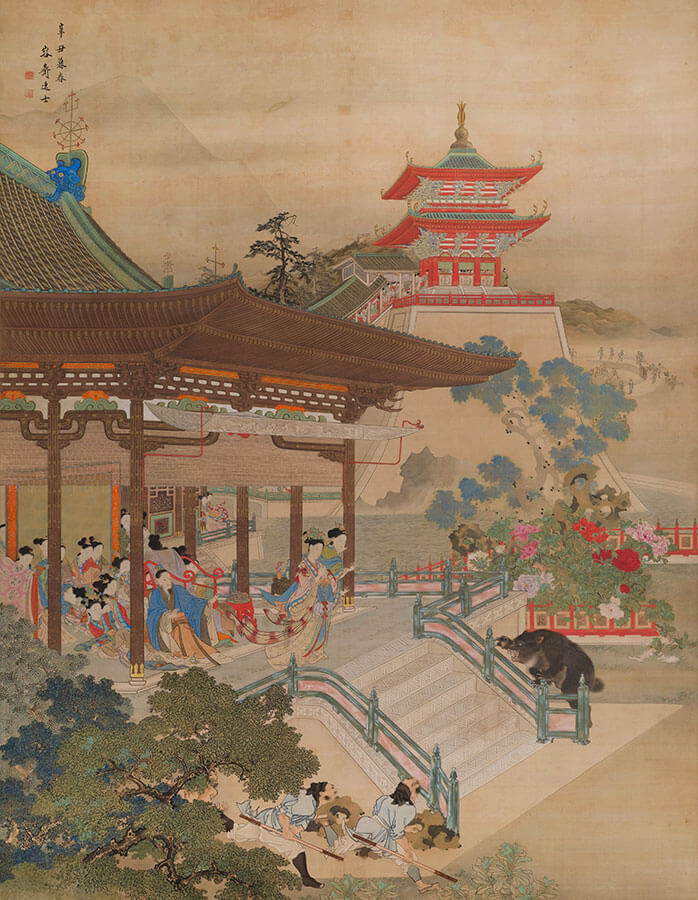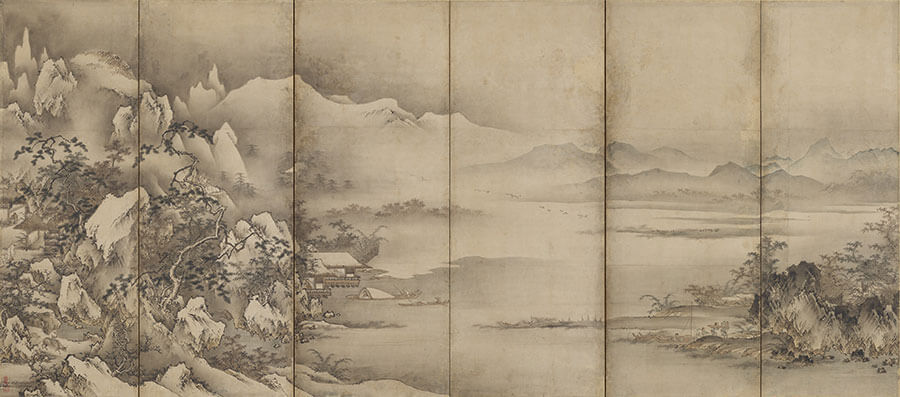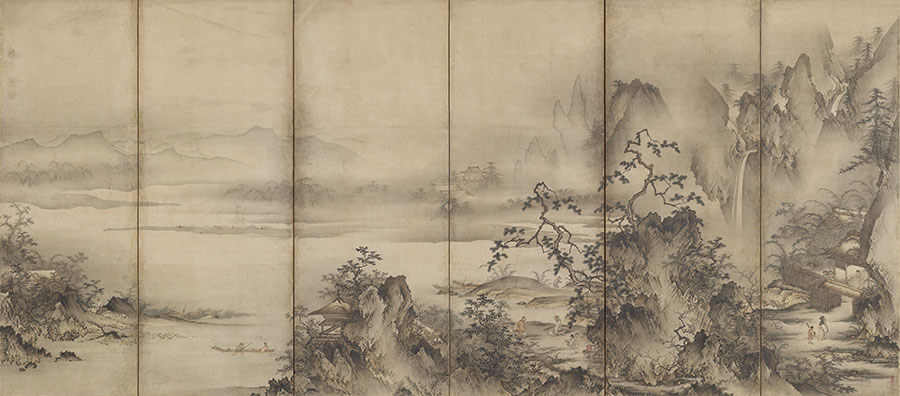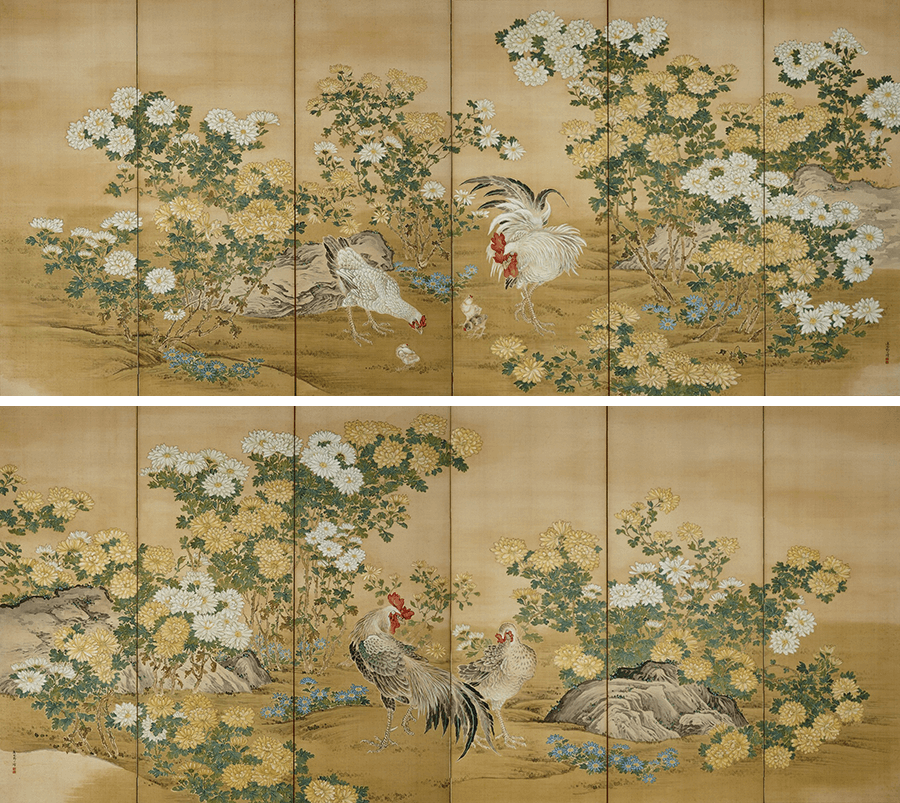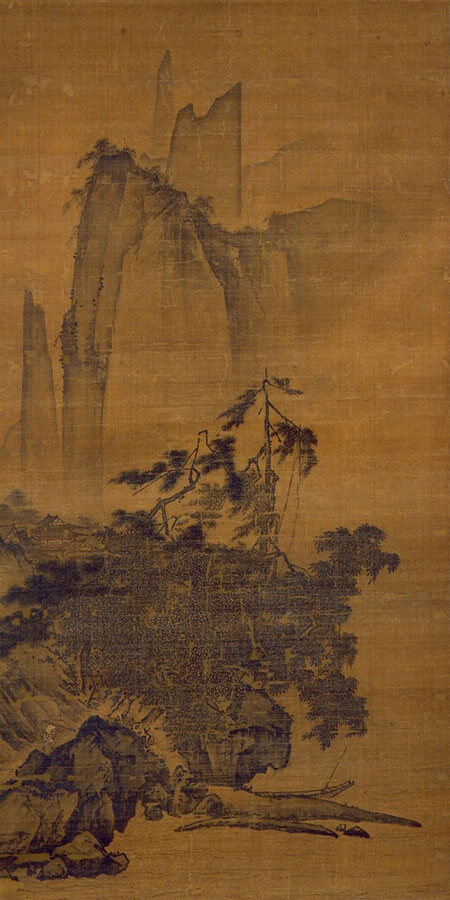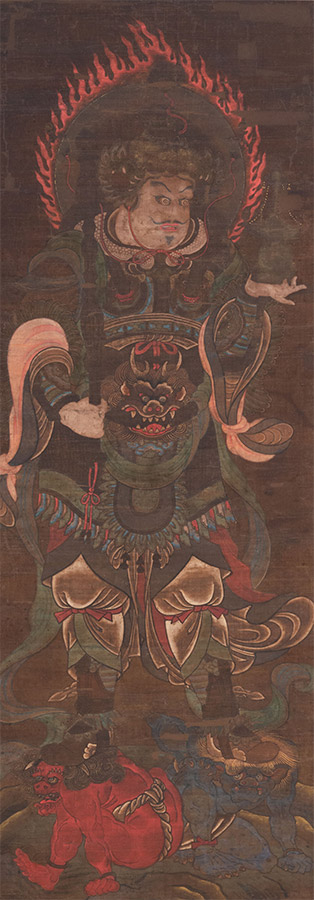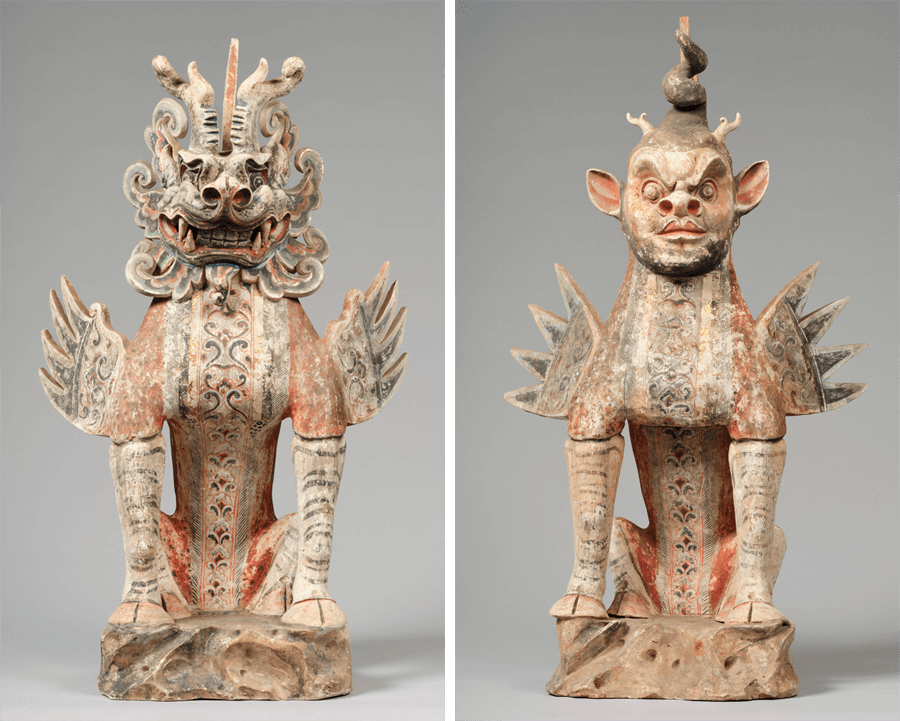Exhibition
Current Exhibition
Newly Restored Masterpieces:A Fresh Look at Seikado’s Important Cultural Properties and, National Treasures of the Present and Future!
- October 4 (Sat) – December 21 (Sun), 2025
Exhibition period divided into two phases, with some changes to the items on display.
Part 1: October 4 (Sat) – November 9 (Sun)
Part 2: November 11 (Tue) – December 21 (Sun)

The court lady Feng Zhao-yi confronting an escaped bear
By Kikuchi Yōsai
Landscape of the Four Seasons
By Shikibu Terutada
Landscape of the Four Seasons
By Shikibu Terutada
Chrysanthemums and birds
By Noguchi Yūkoku
Landscape in wind and rain
Attributed to Ma Yuan
On the occasion of the Osaka/Kansai Expo 2025, this exhibition brings together 3 national treasure, 16 important cultural properties (eight of them on show for the first time since restoration), and 20-odd pieces that were previously shown at an expo at the beginning of the twentieth century, as well as artworks that will surely become national treasures in the future including a huge painting by Kikuchi Yōsai and some others, appearing in Marunouchi for the first time. This special exhibition showcases some of the highlights of the Seikado collection and shines new light on the esthetic pleasures of East Asian painting.
Next Exhibition
Battling Buddhist Images
- January 2 (Fri.) – March 22 (Sun.) 2026
Exhibition period divided into two phases, with some changes to the items on display.
Part 1: January 2 (Fri.) – February 8 (Sun.)
Part 2: February 10 (Tue.) – March 22 (Sun.)

Tomb Guardian, Tang dynasty,
Colored standing statue of a divine general,
7th–8th century, Tang dynasty, China
Important Cultural Property,
Twelve divine generals (Horse General),
ca.1228, Kamakura period, Japan
Important Cultural Property,
Attendant of Kōmokuten(Virupakṣa), by Kōen,
Kamakura period, 1267, Japan
Bishamonten(Vaiśravaṇa),
Kamakura period, 13th century, Japan
Tomb Guardian Beasts,
Tang dynasty, 7th-8th century, China
Visitors to temples and museums are often surprised to encounter Buddhist images wearing armor and carrying weapons, their eyes ablaze with righteous anger. Who are they battling against, and what are they fighting to protect? This exhibition looks at these “fighting divinities,” focusing on the famous sculptures of the 12 divine generals that once stood in the Jōruriji temple. The exhibition also marks the first appearance in our Marunouchi gallery of figurines of tomb guardians from Tang China, allowing an opportunity to explore the roots from which similar figures developed in Japan.
Exhibition Schedule 2026-27
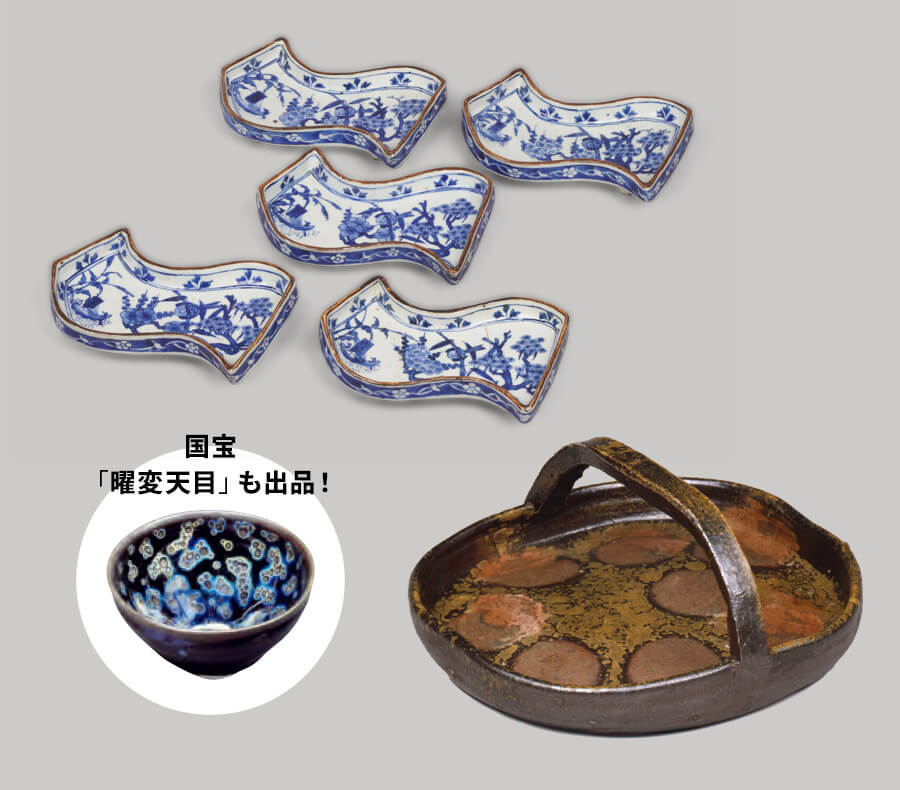
Stoneware dish with handle, Bizen ware, Momoyama to Edo period, 17th century
National Treasure, Tea bowl, Yōhen-tenmoku, known as “Inaba Tenmoku”
Where Beauty is Served:
Kaiseki vessels and Spirit of Tea Ceremony
- April 7 (Tue.) – June 14 (Sun.), 2026
“Kaiseki” originally referred to the cuisine served to guests at a formal tea gathering (chaji), before the serving of matcha thick tea. This exhibition brings together a selection of kaiseki utensils from the Seikado collection, including lacquerware, mukō-zuke dishes, and bowls. Together with fine tea ceremony utensils, we hope you will enjoy the subtle beauty and refined designs of these utensils, which play an essential part in creating the elegant atmosphere of a formal tea gathering.
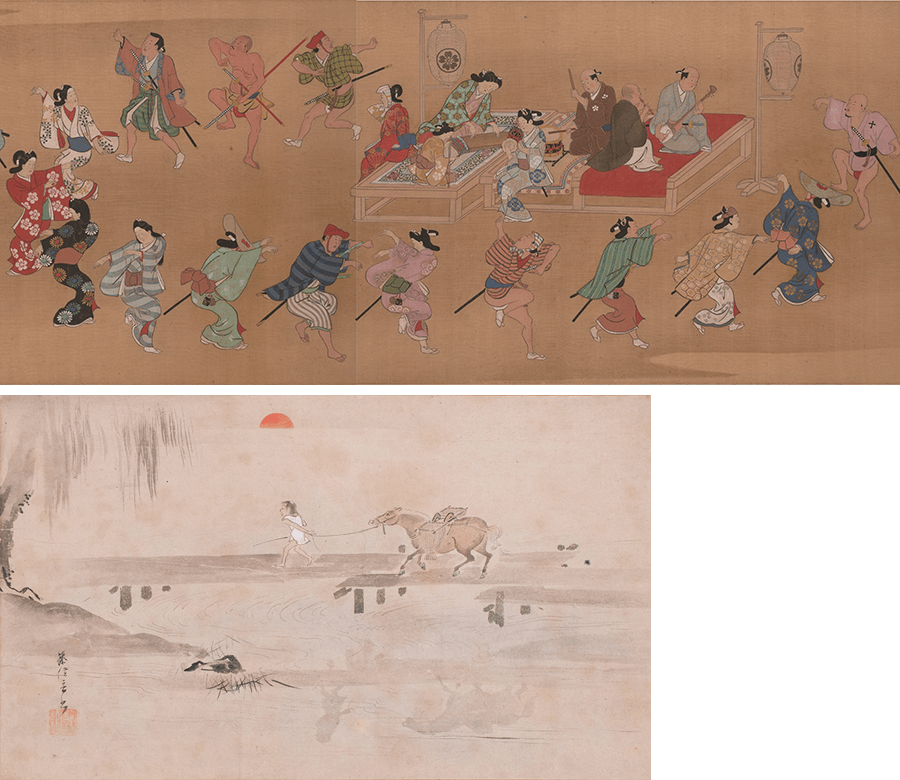
Leading a Horse under the Morning Sun, by Hanabusa Itchō, Edo period, c.1688-98
Step Inside Moronobu’s Genre Scenes of the Twelve Months:
Masterpieces of Early Ukiyo-e
- June 27 (Sat.) – August 23 (Sun.), 2026
Hishikawa Moronobu (1618?–94) was a pioneer of the ukiyo-e genre of woodblock prints and paintings, particularly known for his work Beauty Looking Back. Genre Scenes of the Twelve Months, in the Seikado collection, is a brilliant pictorial scroll executed on a vast scale, using Moronobu’s unique pictorial gifts to vividly illustrate the lives of ordinary people throughout the year. In addition to screens and scrolls by Moronobu himself, the exhibition traces his artistic genealogy, looking at his influence on Hanabusa Itchō and artists of the Miyagawa school.
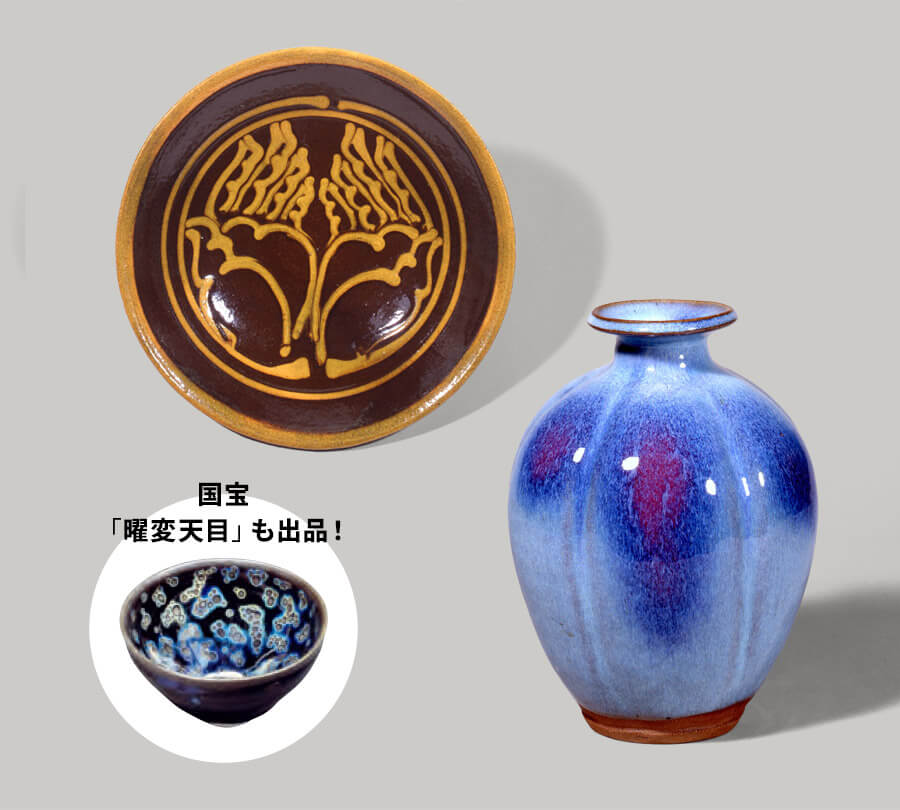
Lobed jar, with purplish opaque glaze, by Kawai Kanjirō, Shōwa era, c.1930
National Treasure, Tea bowl, Yōhen-tenmoku, known as “Inaba Tenmoku”
Ceramicist Kawai Kanjirō, 60 Years After His Death:
The Sources of His Creativity in Traditional Ceramics
- September 5 (Sat.) – November 8 (Sun.), 2026
Kawai Kanjirō (1890–1966) was one of the outstanding Japanese ceramicists of the first half of the twentieth century (Taishō and early Shōwa eras). Following his encounter with Mingei (folk art) in the 1920s, he began to produce ceramics marked by a strong awareness of the idea of functional beauty. This exhibition brings together 51 pieces by Kanjirō from the Seikado collection and explores the sources of the artist’s creativity.
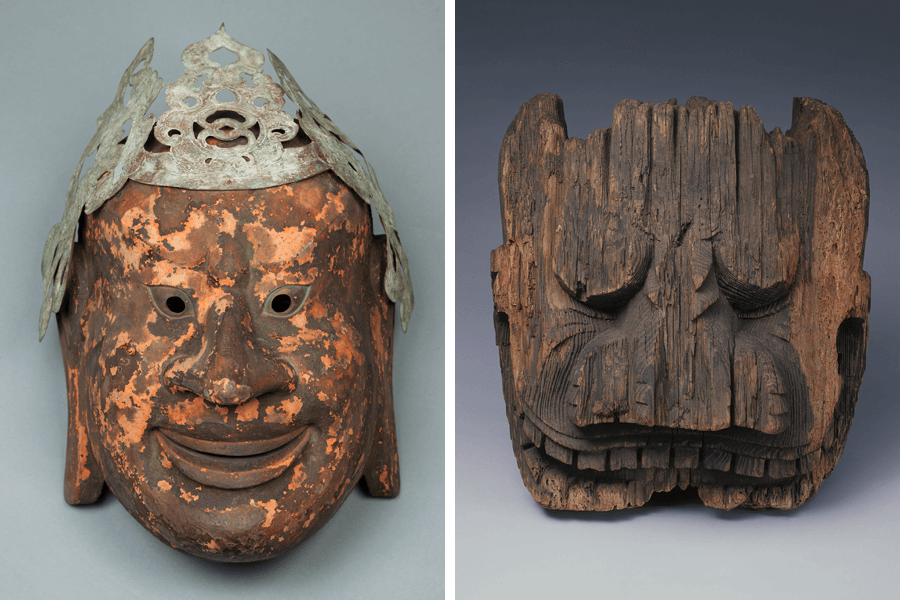
Wooden Demon Face, Date unknown
The Fascination of Masks:
Collecting, Recreating and Performing
- November 21 (Sat.), 2026 – January 17 (Sun.), 2027
Masks capture the various expressions of the human face and conjure up the features of demons and other imaginary beings. Why are some people so fascinated by masks? Focusing on masterpieces of the art, including a replica of a Gigaku dance mask by Kanō Tessai, a Wooden Demon Face that previously belonged to the collection of Matsuura Takeshirō, and noh masks from the daimyō collection of the Shibata domain, this exhibition explores the fascinating power that draws some people to collect and recreate ancient masks from the early modern period to the modern era.
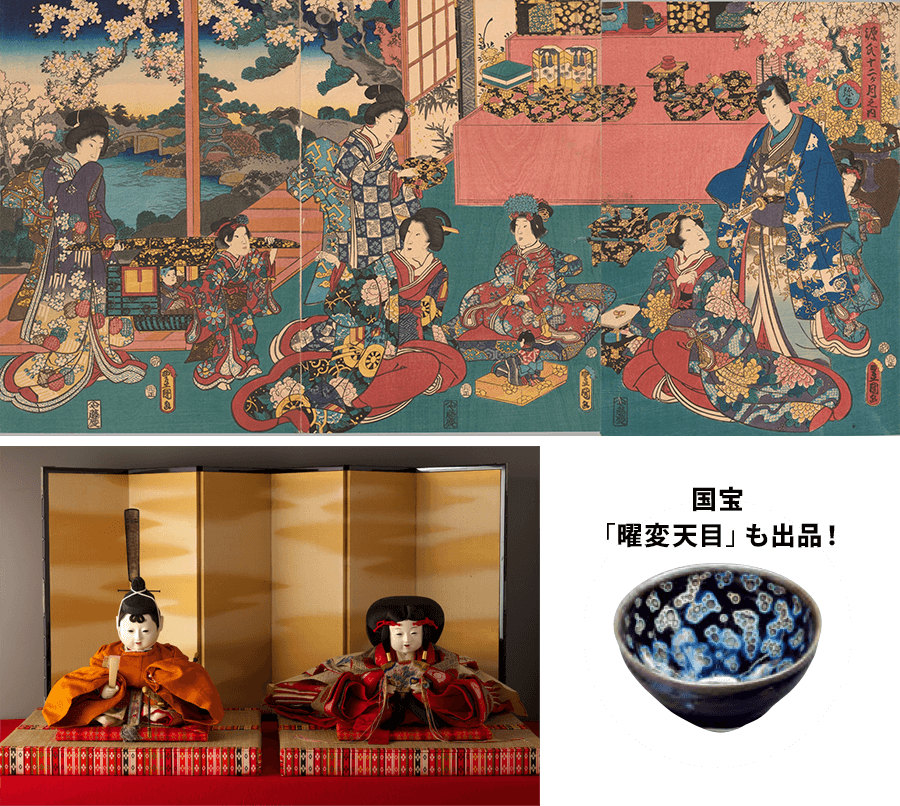
Hina dolls, crown prince and princess as boy and girl, Produced by the studio of Ōki Heizō V, Early Shōwa era, Early 20th century
National Treasure, Tea bowl, Yōhen-tenmoku, known as “Inaba Tenmoku”
Hina Dolls and Ukiyo-e Prints of the Tale of Genji:
Objects Beloved by the Iwasaki Wives
- January 30 (Sat.) – March 8 (Sun.), 2027
To coincide with the hina-matsuri (doll festival) that greets the arrival of spring, this exhibition marks the first ever public showing of the colorful album of nishiki-e prints depicting scenes from the Tale of Genji , which were cherished by Sanae, the wife of Iwasaki Yanosuke. These will be shown alongside the hina dolls that were specially commissioned by Iwasaki Koyata and beloved by his wife, Takako. We hope visitors will enjoy these two masterpieces, still imbued with the affection they inspired in these two women more than a century ago.



